What does an average person know about the Pakistani weapons and the military-industrial complex? Nothing. Ordinary people are not interested in this kind of weird stuff. OK, so what does an average gun enthusiast know about Pakistani weapons? Probably not much either.
What usually comes to mind is grumpy bearded guys wearing funny hats, who live in caves and build AKs out of scrap metal; barefoot children who manufacture Glock copies only using files and maybe some chopped up tin cans to make trigger mechanism parts.
The previous video is how a lot of people imagine all of firearms manufacturing in Pakistan. The reality is very different and much more interesting. Pakistani firearms industry is made up of two unequal, and seemingly incompatible, parts.
State Run Manufacturing
The first part, both more significant and lesser-known, is official, state-run, modern, and successful (no sarcasm here), and includes companies like POF (Pakistan Ordnance Factory), which manufactures different small arms, equipment, gear, and munitions.
Some of those weapons can be easily found on the US market: MP5s and G3s. In my personal experience, the G3s they make are quite good, reasonably reliable and accurate. The finish, according to both Pakistani engineers and US consumers, remains the biggest problem, so don’t be surprised if someone will recommend you to put you new Pakistani rifle in the oven for couple hours – a lot of people say it helps with the finish durability. Other than that – they are reliable and dependable weapons.

Pakistani MP5, imported by FedArms
Unofficial Industry
The second, and much smaller, part of the Pakistani firearms industry is concentrated in Darra Adam Khel, where some AKs, as well as other weapons, are manufactured.
In my opinion, no one has done a better job talking about Darra than Miles V. His take on this topic is excellent and very accurate, so I am not going to recreate what he has done. Having said that, I want to discuss some of my experiences.
I was fortunate to experience both parts of Pakistani firearms industry personally. I spent several exciting and unforgettable months in the POF headquarters in Wah Cantonment, testing different weapons.
On an entirely different occasion, I worked in Afghanistan, where I was lucky (or unlucky) enough to inspect, repair and shoot a very substantial amount of Pakistani made AKs.
Today we will take a look at the Pakistani AKs. Keep in mind, that no Army unit or Law Enforcement Agency in Pakistan ever uses those AKs. Pakistani people have many great virtues, and they do know their guns. Therefore, a lot of those Darra made products are ending up with less scrupulous clients in neighboring Afghanistan, since Pakistanis will not typically buy them.
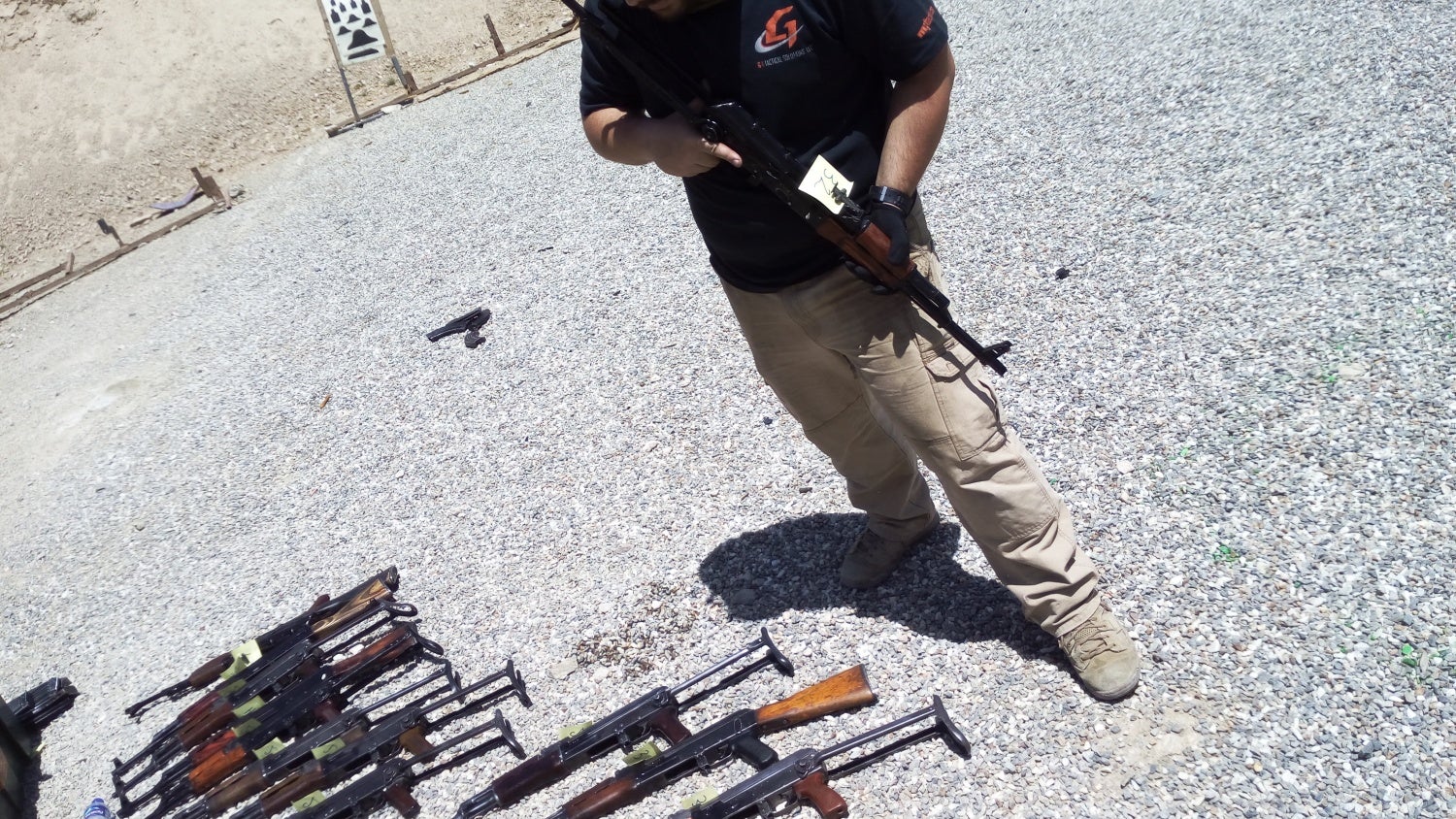
The author at the shooting range near Kabul doing some AK test fire.
Afghanistan is a unique place for AK enthusiasts. Every armory is like a museum. I remember that on one project we had Kalashnikovs from 9 different countries: Russia, Egypt, Romania, Hungary, Albania, Yugoslavia, China, Germany and even Iraq. Sometimes you find real gems. For example, one time I had an AK47 “Type One,” made in 1950. Even in Russia, this weapon would be tough to come by.


Classic AK47 type one, used by a security guard.
However, among all the guns I encountered, there were a lot of those I could not identify right away. First, there were several AKs with Russian Izhmash stamp and serial number with letters…in English.
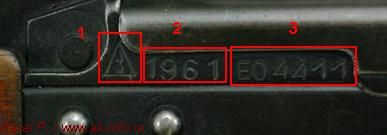
This is what a normal Soviet AKM serial number looks like.
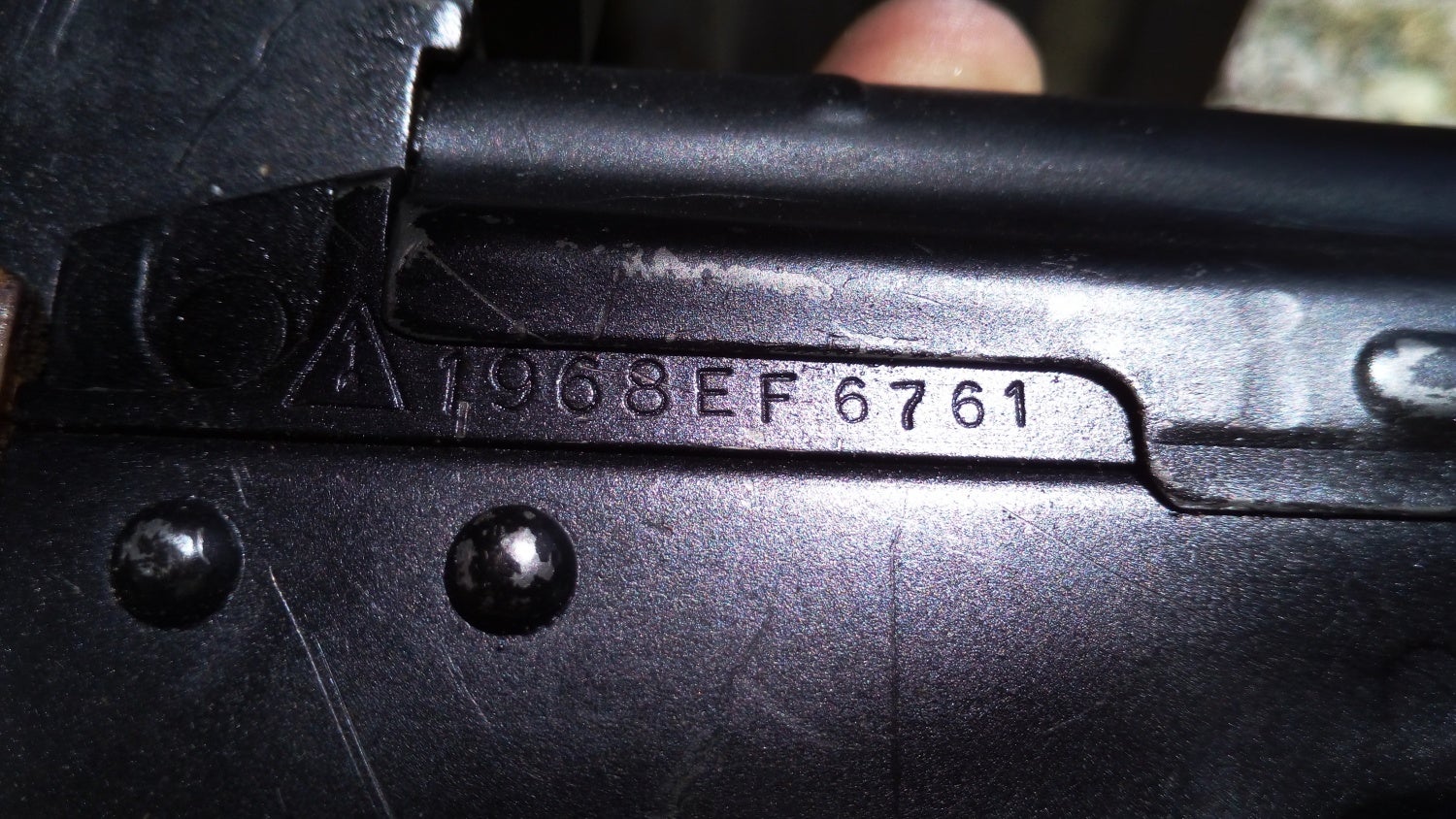
And this is what I saw in Afghanistan.
Why would a Soviet manufacturing plant in 1968 put marking in English on the quintessential communist weapon? I had no answer.
Maybe it was a secret batch of weapons for Cuba and the markings in English were there to confuse filthy imperialists? 🙂 But why is the factory logo is still there!? There were plenty of those guns with different years of manufacturing, so the conspiracy theory about “secret batch” just was not very plausible.
I called some friends, and they confirmed what I already knew – that could never happen. A Soviet factory could produce a weapon with no serial numbers at all, but a serial number in English? No way.
After a few days, I was introduced to a local armorer. He had a great mustache, a little bit of nostalgia of the old times when Soviets were still in Afghanistan. He was a tremendous professional who could replace an AK barrel with nothing but a hammer and a vice.
While he did not speak any Russian or conversational English, and I did not speak Dari or Pashto, we still managed to discuss many things. From the modern history of Afghanistan to the overall political situation in the country and the least painful ways to assemble AKM fire control group. Eventually, the conversation turned to that mysterious AK with English markings.
It took no time for the Afghan armorer to identify those guns. “Oh… – he sighed deeply, and at that moment on his face you could see all the suffering of Afghan people of the last few hundred years – IN AZ POKISTON” – he said, spit on the ground and added a few words in Dari that I could not find in the dictionary.
It all made sense now. Russian/Soviet weapons are typically the most expensive when you sell then in this region, and the unknown Pakistani gunsmith desperately wanted to imitate an Izhmash AK. But in Darra, serial numbers are put on weapons with a set of bits and a big hammer, and the poor guy apparently didn’t have a set with the Russian alphabet. So he decided to compromise – English letters on the serial number and well known Russian Izhmash logo. Since not every customer is a linguist, it might work, and the vendor selling the rifle would get his $2000 for “original Russian, mint condition, real war trophy AKM.”
The only remaining problem was the markings on the selector. You do not have to be a linguist to know that the markings on the Russian AK are “ОД” (OD) for semi-automatic and “АВ” (AV) for full auto.
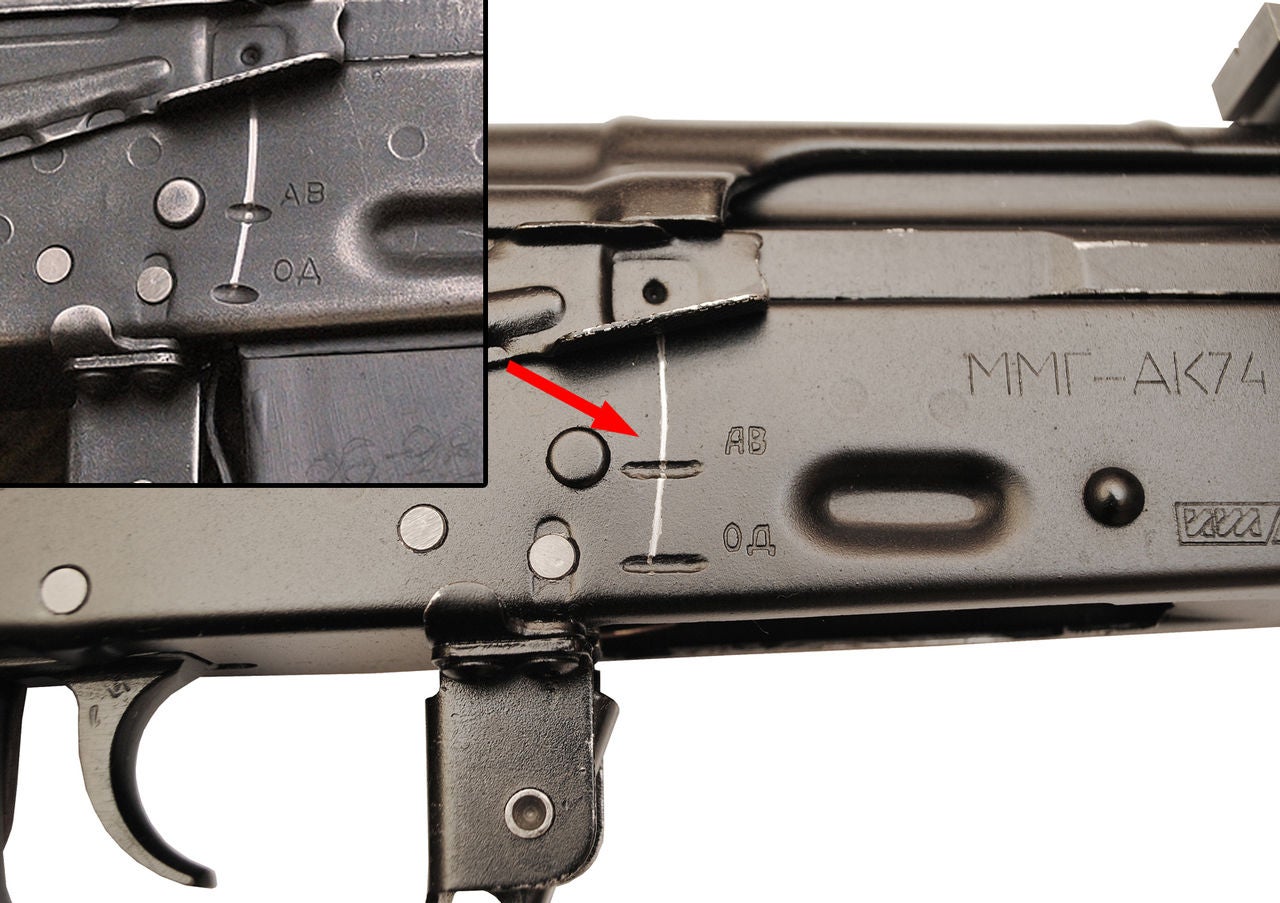
This is how selector marking on the Russian AK should look
This is where Pakistani gunsmith did not want to compromise, but thankfully, gunsmithing schools in Darra do not teach Russian, so the result looks quite funny for a Russian speaker like myself.
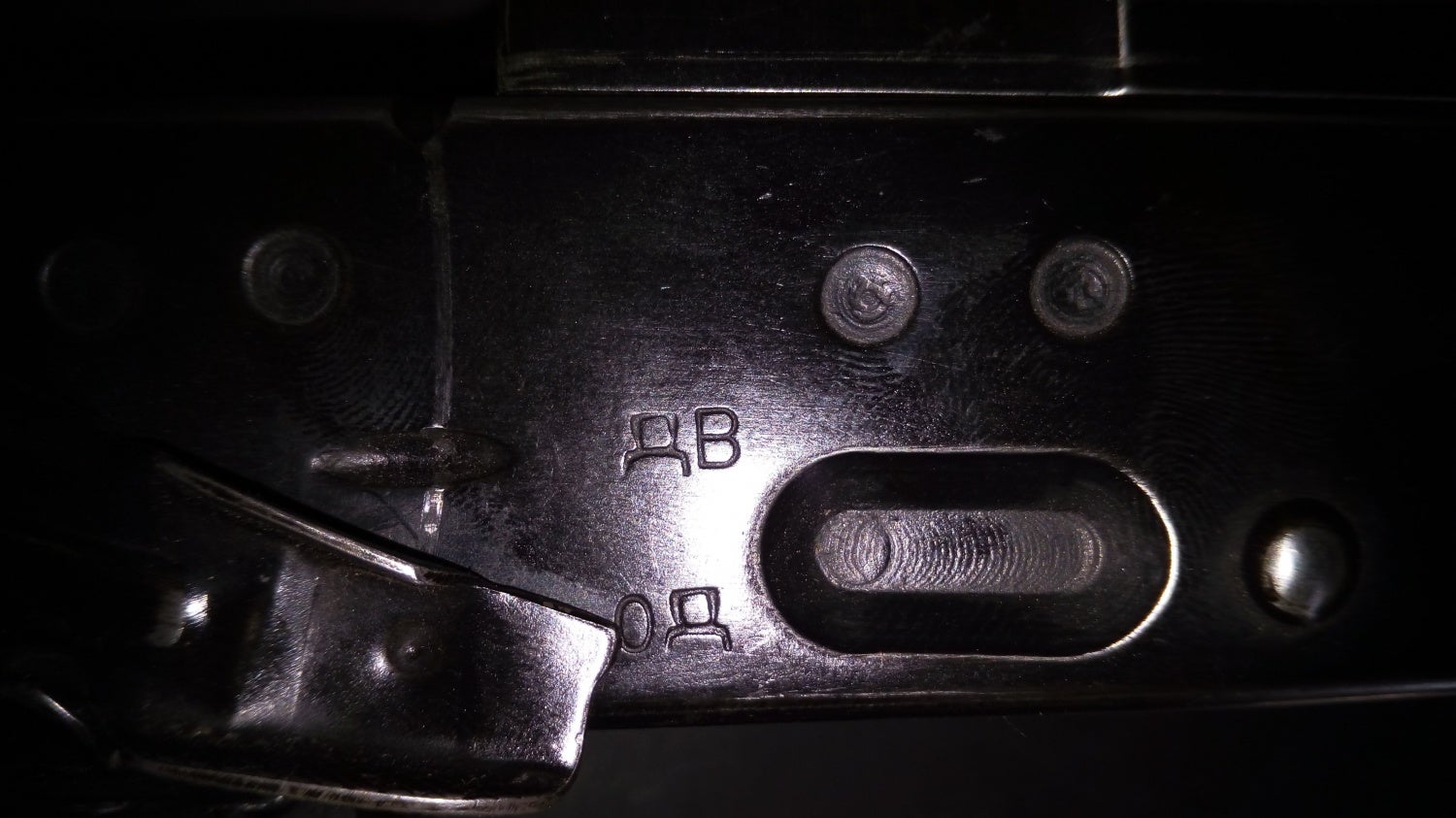
The Darra attempt to recreate Russian markings. Instead of “АВ” (AV), the marking is “ДВ” (DV), which makes no sense.
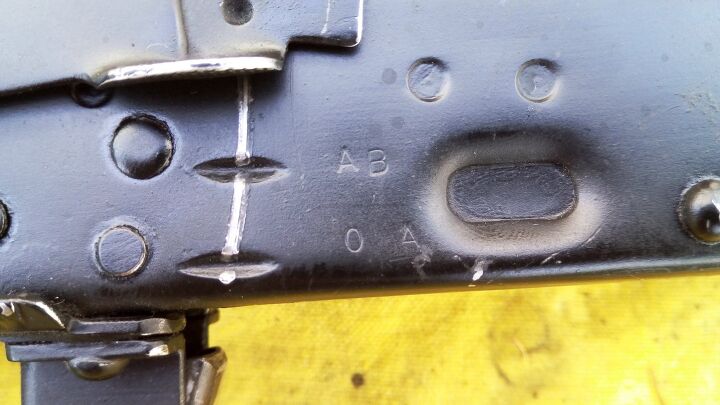
Another example. Instead of “ОД” (OD), the marking is “ОА” (OA), which also makes zero sense.
But enough about markings. The real question everyone asked:
“What was the quality of the guns?”
To be polite, I would say that the quality was inconsistent. One weapon blew up in my hands when we took it to the range. Other guns, surprisingly, did not. Most of them had different problems.
Before I came to Afghanistan, I have never seen a keyholing AK in 7,62×39. I know of at least two Saigas with verified 50,000 rounds shot through each weapon, both guns are still in decent condition and shoot 2-3 MOA groups with cheap steel cased ammo.
But those Pakistani guns were no Saigas. On one range day, I had at least 15 keyholing AKs and probably 90% of them were made in Pakistan.
For some reason, rear sight wobble is a big problem on most Darra AKs
However, I remember at least one Pakistani AK that worked well, did not keyhole, and no matter how much I tried, I could not find anything wrong with it.
Nevertheless, mostly those guns were quite bizarre. One day, I decided that I should clean one of those AKs, did the field strip and attempted to remove the handguard. To do that on a standard AK, you have to turn handguard retaining plate lever and push the plate forward. But on this gun, the lever just didn’t turn. I grabbed a gas tube to lift the lever up, but nothing happened, no matter how hard I tried.
I grabbed a pair of pliers and continued a steady assault on the lever. All of that was happening on the table that stood in the middle of the front yard of a lovely villa in the Green Zone.
Kabul is not the most entertaining city in a world, so by the time I grabbed the pliers half of the neighborhood was there to see “that Russian AK “expert” who cannot even disassemble the gun”.
I tried and tried, but the lever did not move. I had no choice but put to work my last resort–a huge freaking hammer. By that time, everyone was there, summoned by my groans and swearing: high-speed security contractors, the whole bunch of Gurkhas and even the gardener.
However, the hammer was useless just like everything else. In complete despair, I threw the weapon on the table and started to think. That did not help. When I looked at the gun again, I noticed that the lever had moved. It did not lift up as it should. Instead, it moved to the side, like an AR-15 takedown pin.
Apparently, the Pakistani gunsmith did not care how the original lever worked, he replicated it, and then he just jammed it into handguard retaining plate.
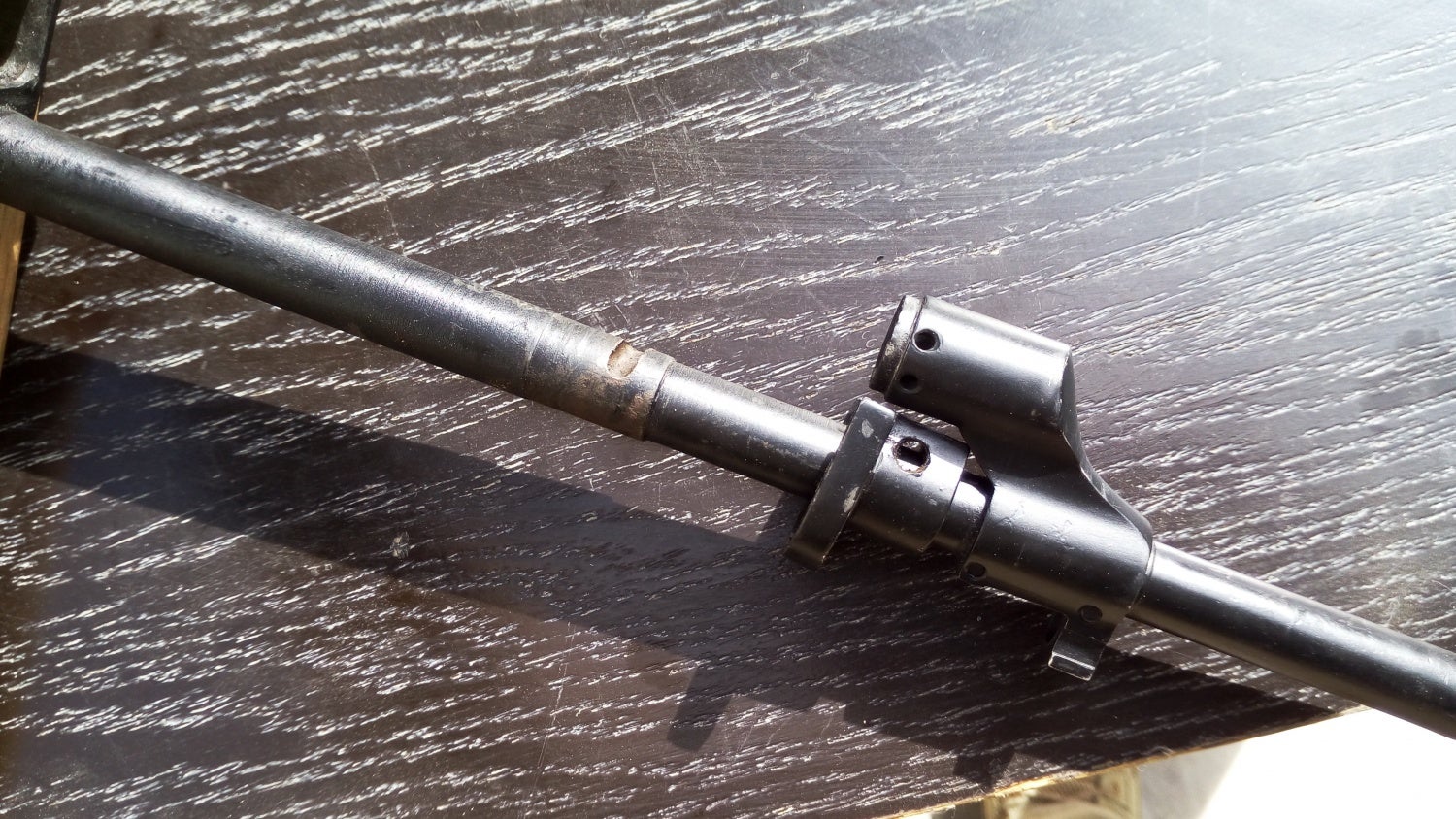
It was not the only example of a gunsmith replicating the “form but not the function” that I had the pleasure of experiencing.
Probably, the most peculiar example of “fine” craftsmanship was a rear sight I saw on one of the AKs just a few days before I left. It had markings for distance, functional slider, but it missed one very critical detail.

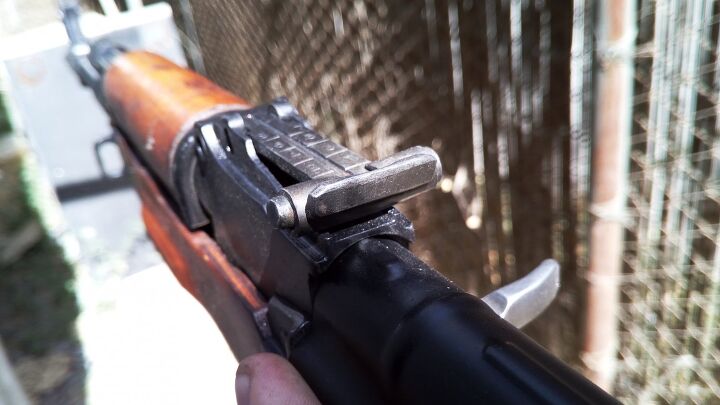
There was no notch in it.
Sometimes I wonder, what went through the mind of this unknown gunsmith. He made sure distance markings are correct, put on the slider, and then… Maybe he just wanted to be ironic and different, like many artists these days.
Conclusion
As much as I respect the determination of craftsmen of Darra Adam Khel, the final product often leaves a lot to be desired. And if you will ever have to shop for an AK at the market in Afghanistan, just make sure you really know what you are doing.
 Your Privacy Choices
Your Privacy Choices
